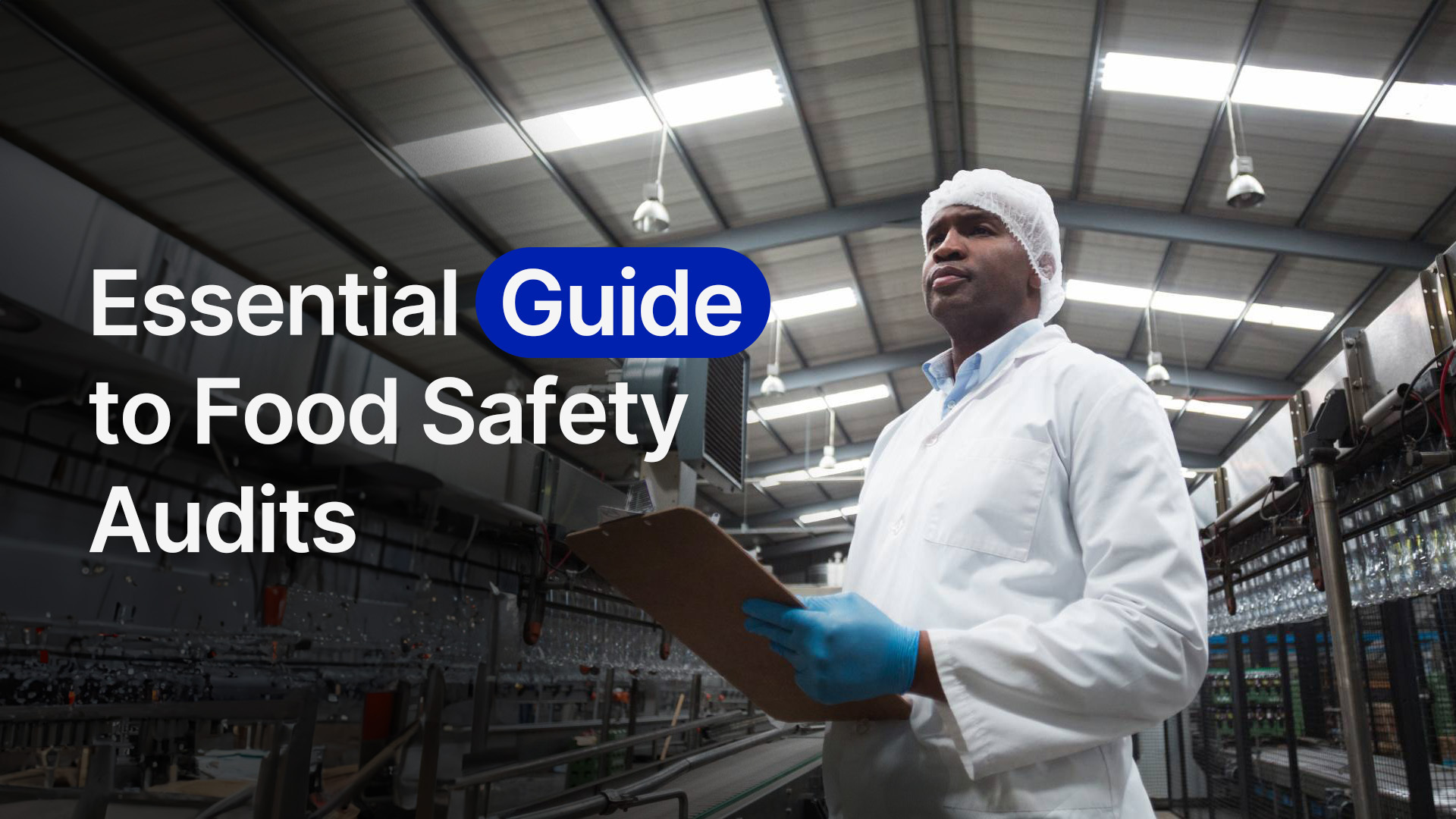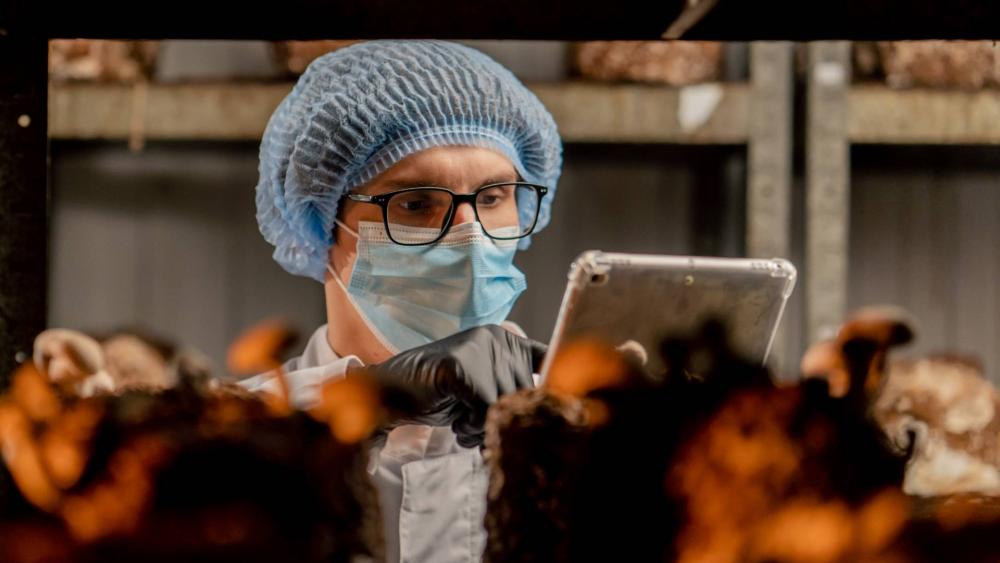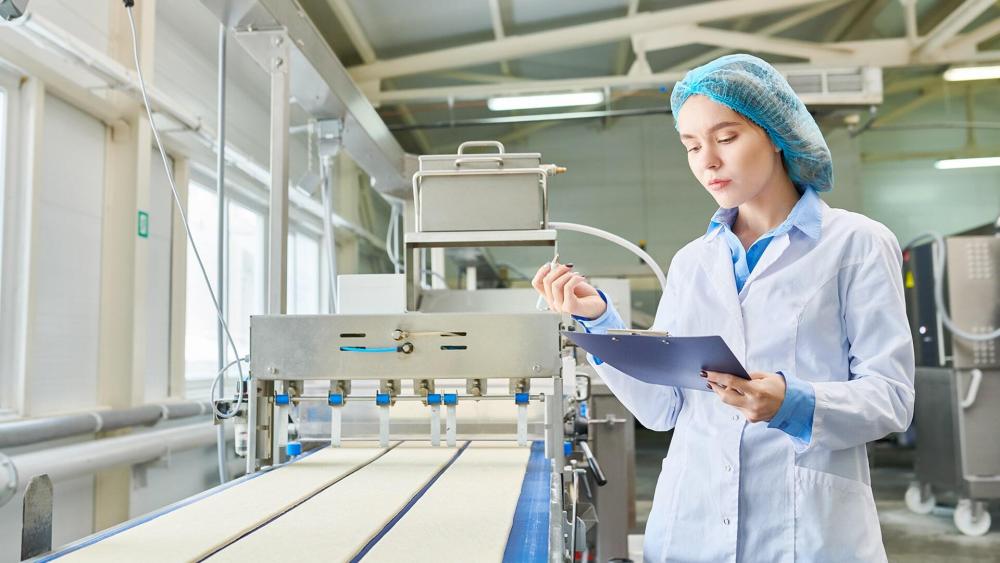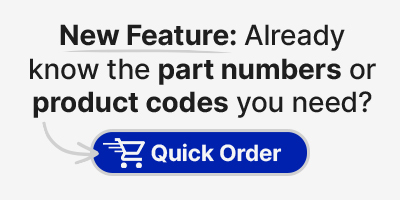Essential guide to food safety audits: tips for success

Since food safety is one of the most critical responsibilities for any food processing facility, performing regular and rigorous food safety audits is an essential safeguard.
In an industry where foreign matter contamination can result in severe health consequences and damage to a brand’s reputation, it’s essential that every business takes this process seriously.
Especially since external auditors can arrive unannounced. Depending on your location and your business sector, an external food safety audit can be anywhere from every six months to every two years. So, you need to be ready.
By conducting regular internal audits, businesses can maintain compliance with stringent food safety standards, protect consumers from harm and help to ensure there are no issues when the external auditors arrive.
So, let’s explore the importance of good food safety audits and take a step-by-step guide to conducting yours smoothly and effectively.
Why food safety audits are essential
Food safety audits are not merely a regulatory requirement; they are a cornerstone of operational excellence and, of course, businesses keen to demonstrate best practice welcome them with open arms. Here's why they're indispensable:
- Compliance: Regulatory bodies like the FDA, EU, FSA and other international organisations have set high food safety standards. Regular audits ensure that your facilities remain compliant with the relevant regulations.
- Risk Mitigation: Foreign matter contamination can occur at any stage of the manufacturing process. An audit helps identify and rectify potential sources of contamination, helping to ensure that unsafe products never reach consumers.
- Reputation Management: A food safety incident can severely damage a brand’s reputation, resulting in lost consumer trust and recalls. By staying proactive and conducting regular audits, producers safeguard their brand, their bottom line and their consumers.
Audits should not be seen as a box-ticking exercise but as an opportunity to continually improve processes and protect customers.
Step-by-step guide to conducting food safety audits
Conducting a thorough food safety audit involves multiple steps. These will vary from business to business and territory to territory. If the audit is part of a certification or accreditation process then there will be some very specific steps that need to be taken and the auditor will detail those.
What follows is, by necessity, a general template dealing with basic principles rather than specifics.
Before food safety audits
1: Preparation
Preparation is key to a successful audit. As the saying goes: By failing to prepare, you are preparing to fail.
1a) Before the audit begins, assemble an audit team, each member of which has specific duties for inspecting relevant areas of the facility, keeping methodical records and communicating clearly with the rest of the team, management and any other relevant stakeholders.
1b) Even if the audit is purely an internal exercise, clearly define objectives, whether it's verifying compliance with regulations, dealing with issues from a previous audit or improving internal food safety practices.
1c) Ensure that everyone has been trained on food safety audit procedures.
1d) Conduct an internal review of documentation, management systems and of potential hazards or areas of non-compliance.
2: Documentation and traceability
During the audit, ensure that all documentation - both physical hard copies (where relevant) and/or digital copies - are complete and accessible.
Proper documentation ensures that any non-compliance issues identified during the audit can quickly and effectively be addressed.
2a) Gather and review all relevant documents, such as cleaning logs, temperature records, business certifications or employee training certificates and ensure that everyone who needs access to them has access to them.
2b) Be sure to record any corrective actions taken after previous audits.
2c) Assemble comprehensive traceability records. These are necessary to track the movement of food products and raw materials through all stages of production, processing and distribution - both internally and through the supply chain.

During food safety audits
3: Onsite inspection
A fearless inspection of existing facilities is perhaps the most critical part of the audit.
3a) Walk through the facility and visually inspect high-risk areas, such as processing lines, storage areas and packaging stations.
3b) Look for any signs of contamination, such as food residue, pest activity or faulty equipment.
3c) An external review may well involve interviewing staff, so ensure all staff members are ready to be interviewed about their role and their knowledge of food safety best practice.
3d) It’s also vital to observe employees' working practices and ensure they align with hygiene and safety standards. If they don’t, that should trigger a need for additional training and possibly additional resources.
4: Review and reporting
After the inspection, review your findings and compile a comprehensive report. This should detail:
4a) Any non-conformances or violations of food safety protocols should be acknowledged and a plan of corrective actions drawn up.
4b) Draw up timelines for these corrective actions.
4c) Assign responsibilities for completing the corrective actions.
4d) Make recommendations for improving or enhancing food safety practices, even if no non-conformances were identified.
4e) The report should be distributed to all relevant stakeholders, ensuring that the issues are communicated and understood by everyone.
After food safety audits
5: Implement changes
The real value of an audit comes from taking action on the findings. Once issues have been identified, it’s essential to implement corrective actions swiftly.
Whether this means upgrading equipment, improving sanitation procedures, purchasing production suppliers from different vendors, or retraining staff. Addressing these points ensures that you are doing everything you can to prevent future risks.
6: Follow-up
Audits should be part of a continuous improvement cycle, not a one-off task. To ensure that corrective actions have been effectively implemented, schedule follow-up internal audits. These will help verify that improvements have been sustained and that the facility continues to comply with safety standards.
Furthermore, conducting these internal audits ensures that safety protocols are always top of mind. The value of that continuous vigilance will become immediately apparent the first time the auditors arrive unannounced.
7: Employee training
One of the major takeaways from a food safety audit is the confirmation that all staff are appropriately and fully trained, so their professional behaviour reflects excellence and best practice.
For example, staff should be familiar with the need to wear appropriate protective gear, such as metal detectable gloves and hairnets.
However, food safety is not a one-and-done proposition. Protocols are always changing, technology is always advancing and regulations are frequently being updated. Consequently, training needs to be an ongoing process to ensure staff are informed about the very latest compliance requirements and best practices.
A well-trained work-force is a productive, efficient and safe work-force!
How Detectamet products help with food safety audits
One of the factors these audits are designed to detect is foreign matter contamination risks within your processing facilities. This is where Detectamet’s range of Metal Detectable and X-Ray Visible products can give you a real advantage.
In a formal external audit, the smallest oversight can lead to serious repercussions such as regulatory enforcement, loss of certifications or increased scrutiny - all of which can impact on the smooth running and profitability of your business.
Clearly, if there are issues to address, you’re duty-bound to address them in order to protect your end-users. But, it’s better to avoid such food safety issues in the first place.
At Detectamet, our mission is to help you with that.
Our range of Metal Detectable and X-Ray Visible supplies - from stationery, through workwear and PPE, to storage systems and calibration pieces - are all custom-built to help you maintain a contaminant-free production environment.
Here’s how Detectamet products help ensure your audit process runs smoothly:
Quick identification and removal of foreign matter contaminants: Detectamet products enable your auditors to see you are equipped to easily identify and remove any foreign materials before they pose a risk.
Adherence to safety standards and industry regulations: Using our detectable supplies demonstrates your commitment to adhering to industry standards, contributing to making audits less stressful.
Strengthened consumer confidence: When your audits are clean and your safety protocols are tight, consumers are more likely to trust your brand, knowing that you prioritise their health and safety.
By choosing Detectamet, you’re taking proactive steps to protect your business, your brand reputation and, most importantly, your customers.
Conclusion
Food safety audits are not just a regulatory requirement - they are a vital tool for ensuring the safety and integrity of your food products. Embracing them as an essential part of your food safety protocols can potentially help you avoid financial and reputational damage.
We offer the world’s widest range of Metal Detectable and X-Ray Visible solutions to help businesses stay ahead of foreign matter contamination risks.
Explore our full range of products here or speak to one of our food safety specialists about preparing for food safety audits with Detectamet’s innovative solutions.
 Detectamet Europe (Français - € EUR ) Cliquez ici pour modifier votre devise, votre région et votre langue.
Detectamet Europe (Français - € EUR ) Cliquez ici pour modifier votre devise, votre région et votre langue.












